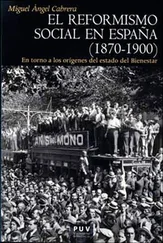The death of Smith marks the end of the founding period and the beginning of a journey that was to become the most important and decisive event in the history of the Church. In this second period, Brigham Young will occupy the place that Smith enjoyed during those first years. Smith’s practical thinking led him to believe that it would be easier to lay the foundations of that promised kingdom of Zion in an isolated place where they could avoid confrontations with neighbors. Moving West was the option, as Smith himself had foreseen before (Andrus 131). After Nauvoo’s failure, Young restored this old goal.
Mormons had to cross the Mississippi River and thus forfeited their chance to make Nauvoo a successful community. They accommodated a temporary settlement in Winter Quarters (present day Florence, Omaha), where they stopped to spend the winter. On April 5, 1847, the first group of pioneers, guided by Young, departed from Nebraska. The last stage of the long exodus took three more months. By mid-July, advance scouts had entered the valley of the Great Salt Lake. On July 24, Young piloted 148 Mormons into the valley. A few days later, he proclaimed that this was the right place to establish the kingdom that the Mormons were bound to build and he chose a proper site for the temple. When the Mormons got there they assumed that they were outside the United States of America, so they took possession of the valley and began to build their settlement without reflecting upon the presence of the former inhabitants of the land. 6
After the annexation of Texas, Mexico broke diplomatic relations with the United States in 1845. Only three years later, that is, one year after the arrival of the Mormons in the valley, the Treaty of Guadalupe Hidalgo was signed and the land that the Mormons had chosen became part of the United States of America. Even before the Treaty, the leaders of the Church had already begun to think about the convenience of asking for territorial status. After California and New Mexico became states, they decided to ask for statehood (Bigler 44-45). In the summer of 1849, a committee wrote a constitution based on Iowa’s, naming their newly drafted state Deseret. The proposal encompassed nearly all of present-day Utah and Nevada, large portions of California and Arizona, parts of Colorado, New Mexico, Wyoming, Idaho and Oregon. The Congress reacted by creating a new territory called Utah Territory that encompassed the northern part of the State of Deseret (Arrington, Mormon 163).
Shortly thereafter, in 1852, the Church acknowledged the practice of plural marriage. Joseph Smith introduced the practice of plural marriage while the members of the Church were still gathering in Nauvoo, but it was only communicated to the main leaders and they avoided giving publicity to it. In fact, this new tenet of the Gospel was an important part of the inner turmoil that led to the controversies that brought an end to the prosperous settlement in Nauvoo. Some leaders opposed this new tenet. In 1852, with the Mormons peacefully developing their own kingdom, the apostle Orson Pratt announced the practice of plural marriage at a special conference (Bigler 61). Smith’s revelation was published after this announcement. In previous years, even though it had not yet been officially acknowledged, polygamy had been a permanent reference for those who were opposing the growing impact of Mormons within their communities. Marriage was a very important tenet in the Mormon Church since the very beginning, because the family, as a unit, was the best resource that the Church had to secure their progress and prosperity. Previous to this new concept of plural marriage, the Church already safeguarded the concept of the family with the introduction of the idea of celestial marriage, which, it is important to bear in mind, is not synonymous to plural marriage. Celestial marriage is the idea, born from Mormon belief, that marriage is everlasting. Marriage, then, is to last even after earthly life is over. The introduction of plural marriage thus strengthens the fortification of an institution that was fundamental to the Church. However, whether it was practiced or not before its announcement, the truth is that it was a constant source for tension and conflict between Mormons and other inhabitants of the United States.
Democrat James Buchanan won the presidential election against John C. Frémont in 1856, but the Republican Party weakened the reputation of the Democratic Party by accusing the party of being tolerant to what they came to call “the twin relics of barbarism” 7: polygamy and slavery. In this context, Buchanan decided to depose Young and appoint Alfred Cummings as the new governor of the territory. Many Mormons saw this appointment as an imposition, and rejected it. Federal officials sent to Utah reported that the Mormons were in state of rebellion and refused to accept the President’s decision. Without even taking the time to investigate the truth, Buchanan decided to dispatch troops (White, It’s 168). It would be wrong to think of these events as anything like what we now call a war, but in historiography these events are all gathered under the appellation the Utah War. However, the conflict is also referred to as “Buchanan’s Blunder”—a title revelatory of the critical reception of the President’s activities. However damaging it was for Buchanan, it was far exceeded by its affect on the Mormons. Their economic welfare was seriously impaired. They had lost Brigham Young as their Governor, and the economic and social involvement of the gentiles 8began to increase. Besides, the Gold Rush and the completion of the transcontinental railroad were anticipating the end of an era—the era in which Mormons came close to attaining the isolation that they were pursuing so that they could succeed in building a prosperous community grounded on their particular beliefs.
Young died in 1877 and in the following years the Federal government launched a series of acts that further narrowed down Mormon power. As far back as 1862, Abraham Lincoln signed the Morrill Anti-Bigamy Act, making polygamy illegal. This measure had been introduced by Congressman Justin S. Morrill of Vermont (Bigler 217). However, once it became clear that there was no money to enforce the law, President Lincoln decided to leave the Mormons alone. In the 1870s, a series of laws tried to impede Church theocracy in the territory. First, the Poland Act, in 1874, tried to eliminate Mormon involvement in the legal system. Later, in 1882, after the Reynolds vs. United States trial in 1879, when the Mormon George Reynolds, accused of bigamy, tried to defend himself on the basis of religious freedom and duty (Bigler 305), the Congress passed the Edmunds Act. This law introduced strong measures to end polygamy, to the extent that any Mormon committed to plural marriage would be imprisoned, would have to pay a hefty fine and might lose his right to vote. And the law was to affect even those who had practiced plural marriage before the Act had been passed. A commission was established to ensure that the new law was enforced. An oath was required to prove that a man was not practicing plural marriage. By the end of the 19 thcentury, Mormons were living in a state of suspicion and threat. Still, Congress suspected that Church members were disobeying the law, and they decided to draw up more severe measures. The Edmunds-Tucker Act of 1887 was intended to be the ultimate mechanism that would provoke the collapse of the Church, and indeed, it shook the Church to its very foundations (Groberg 400). The Church’s President Taylor, who had gone underground to avoid being imprisoned, died after having spent five years directing the Church by the letter. It took two more years for the Mormons to declare Wilford Woodruff their new President, but he too had to go underground. The law sought the dissolution of the Church and the Perpetual Emigrating Fund Company, deeming both illegal. Most Church property fell into the hands of the Federal government. In 1890, the Church came close to certain death, and Woodruff (4 thPresident of the Church, from 1889 to 1898) was compelled to sign the First Manifesto (Arrington, Mormon 183). In that manifesto, Woodruff announced that the Church officially renounced the practice of plural marriage and that no new plural marriages would be allowed by the Church. The Church had been defending the right to practice plural marriage as part of their doctrine and it was not easy to discard it practically overnight. To avoid a general repudiation of the Manifesto, Woodruff reported that he made the decision after praying and receiving revelation. Six years later, the territory achieved statehood.
Читать дальше












